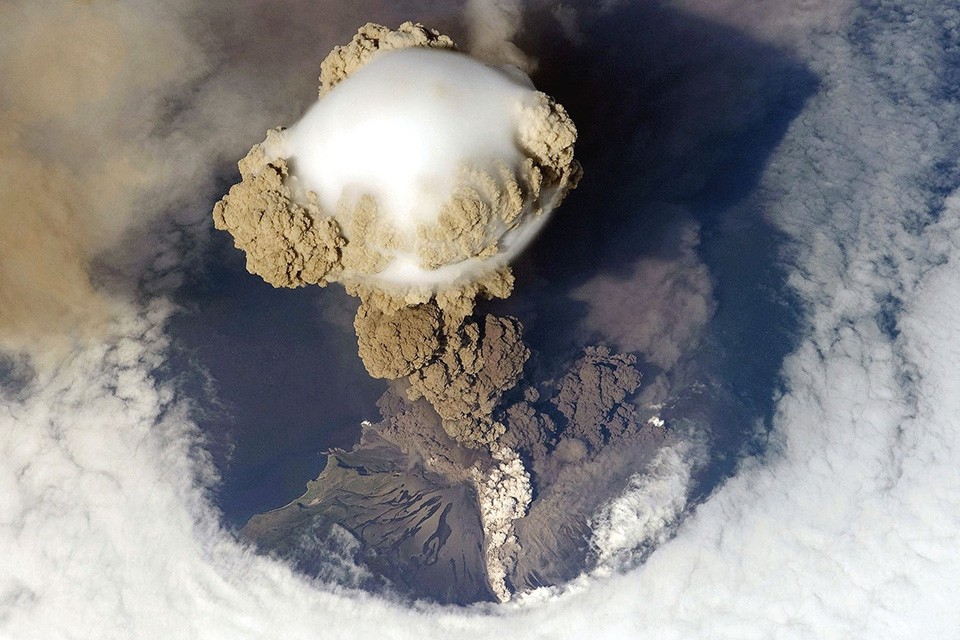In the Gateway to Astronaut Photography of Earth project created with support of NASA, astronauts from the International Space Station (ISS) capture the planet from low Earth orbit. More than 1.8 million images have been created. On the Gateway website you can find 12 collections: “Earth Observatory,” “Glaciersm,” “Volcanoes,” “Impact Craters,” “International Disaster Charter,” “Time-lapse Video Page,” “Capital Cities,” “Missions Highlights,” “Near Infrared Collection,” etc. The “Historical Collection” contains “Whole Earth Photos,” “Transit of Venus Across the Sun in 2012,” and images of cities at night. The earliest photos of the archive were made during the space program “Mercury.”
One of the most interesting instruments of the archive is High Definition Earth – Viewing System, which broadcasts HD video from several cameras installed on ISS. You can also test your knowledge in geography using “Where in the World Image Quiz” or watch time-lapse videos of a particular areas or space phenomena.
A team of seven people works with the project. In the FAQ section you can ask a questions: how much detail is in an image from space, what camera is used by the crew, why astronauts never saw the Northern or Southern poles, and why they do not have time to make a photo of the stars.
One of the most usual questions is “Can Great Wall of China be seen from the space?” Sadly, it cannot be seen with a naked eye from the space, however it can be seen in high-resolution photos.
{“img”: “/wp-content/uploads/2015/01/nasa_011.jpg”, “alt”: “Gateway to Astronaut Photography 01”, “text”: “Klyuchevskaya sopka, Kamchatka Peninsula.”}
{“img”: “/wp-content/uploads/2015/01/nasa_021.jpg”, “alt”: “Gateway to Astronaut Photography 02”, “text”: “Siachen Glacier, the Himalaya Mountains.”}
{“img”: “/wp-content/uploads/2015/01/nasa_031.jpg”, “alt”: “Gateway to Astronaut Photography 03”, “text”: “Damavand volcano, Iran.”}
{“img”: “/wp-content/uploads/2015/01/nasa_041.jpg”, “alt”: “Gateway to Astronaut Photography 04”, “text”: “Earth view from the ISS.”}
{“img”: “/wp-content/uploads/2015/01/nasa_051.jpg”, “alt”: “Gateway to Astronaut Photography 05”, “text”: “Whole view of Earth.”}
{“img”: “/wp-content/uploads/2015/01/nasa_061.jpg”, “alt”: “Gateway to Astronaut Photography 06”, “text”: “Depth measurement from ISS.”}
{“img”: “/wp-content/uploads/2015/01/nasa_071.jpg”, “alt”: “Gateway to Astronaut Photography 07”, “text”: “Mesospheric clouds, which can be seen in both Southern and Northern hemispheres, reaches its peak of vision in late spring – early summer seasons. Due to their shining nature they are called noctilucent clouds.”}
{“img”: “/wp-content/uploads/2015/01/nasa_081.jpg”, “alt”: “Gateway to Astronaut Photography 08”, “text”: “Nostalgia time. Last flight of the Space “Shuttle Program” in summer 2011.”}
{“img”: “/wp-content/uploads/2015/01/nasa_091.jpg”, “alt”: “Gateway to Astronaut Photography 09”, “text”: “Transit of Venus across the Sun.”}
{“img”: “/wp-content/uploads/2015/01/nasa_101.jpg”, “alt”: “Gateway to Astronaut Photography 10”, “text”: “Hurricane “Ivan”, September 2004.”}
{“img”: “/wp-content/uploads/2015/01/nasa_11.jpg”, “alt”: “Gateway to Astronaut Photography 11”, “text”: “Historical image of Stratovolcano.”}
{“img”: “/wp-content/uploads/2015/01/nasa_12.jpg”, “alt”: “Gateway to Astronaut Photography 12”, “text”: “Glorioso Islands, Indian Ocean.”}
{“img”: “/wp-content/uploads/2015/01/nasa_13.jpg”, “alt”: “Gateway to Astronaut Photography 13”, “text”: “Bouvet Island – an uninhabited volcanic island in the Southern Ocean.”}
{“img”: “/wp-content/uploads/2015/01/nasa_14.jpg”, “alt”: “Gateway to Astronaut Photography 14”, “text”: “Italy at night.”}
{“img”: “/wp-content/uploads/2015/01/nasa_15.jpg”, “alt”: “Gateway to Astronaut Photography 15”, “text”: “Cities at night.”}
{“img”: “/wp-content/uploads/2015/01/nasa_16.jpg”, “alt”: “Gateway to Astronaut Photography 16”, “text”: “Night lights of Russia.”}
{“img”: “/wp-content/uploads/2015/01/nasa_17.jpg”, “alt”: “Gateway to Astronaut Photography 17”, “text”: “Two low-pressure areas, Northwestern Pacific Ocean.”}
{“img”: “/wp-content/uploads/2015/01/nasa_18.jpg”, “alt”: “Gateway to Astronaut Photography 18”, “text”: “The Amazon River in daylight.”}
{“img”: “/wp-content/uploads/2015/01/nasa_19.jpg”, “alt”: “Gateway to Astronaut Photography 19”, “text”: “Sahara desert after sunset.”}
{“img”: “/wp-content/uploads/2015/01/nasa_20.jpg”, “alt”: “Gateway to Astronaut Photography 20”, “text”: “Tempano Glacier, Southern Patagonian Ice Field.”}
Images courtesy of the Earth Science and Remote Sensing Unit, NASA Johnson Space Center.





